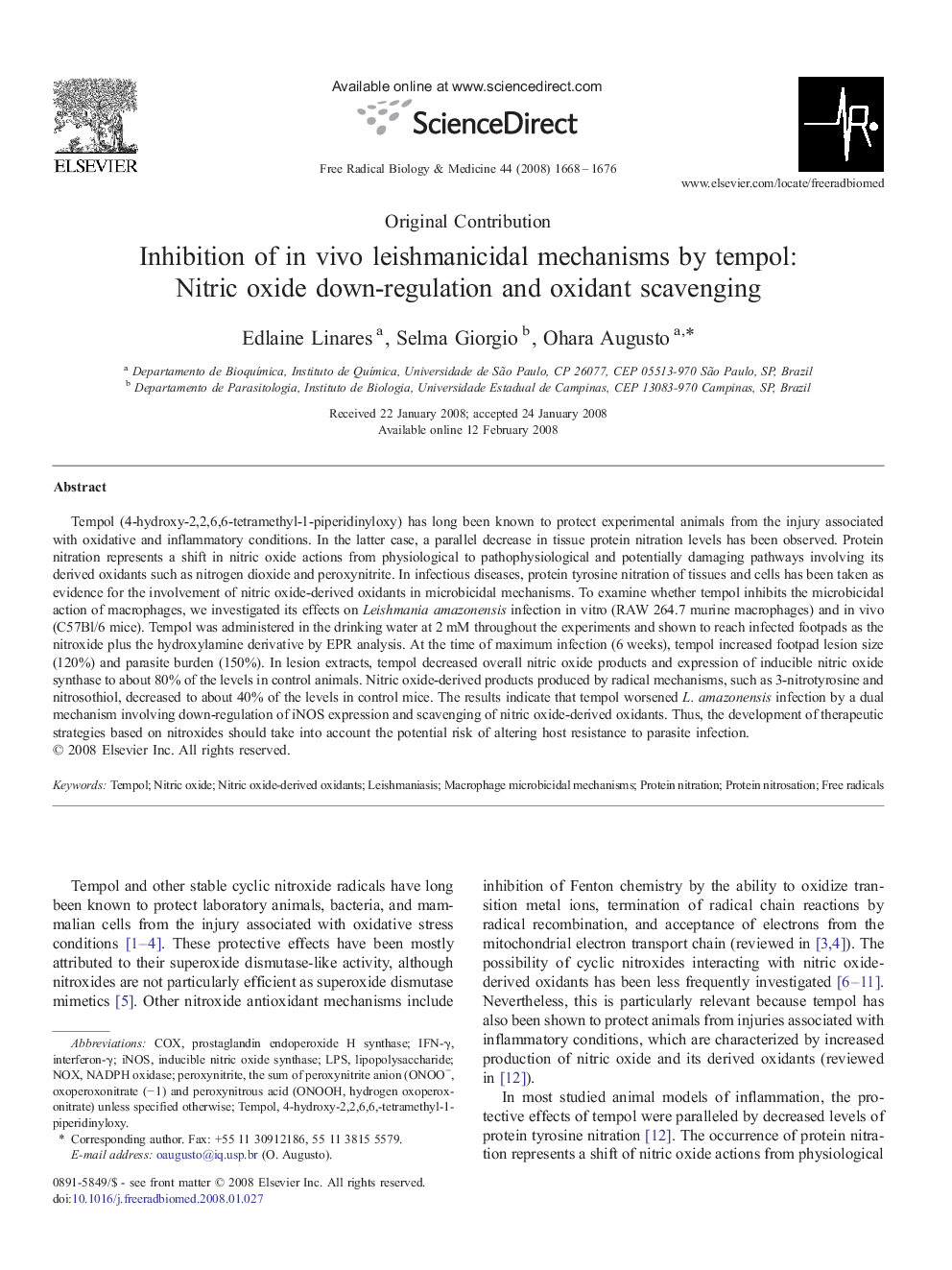| کد مقاله | کد نشریه | سال انتشار | مقاله انگلیسی | نسخه تمام متن |
|---|---|---|---|---|
| 1911170 | 1046804 | 2008 | 9 صفحه PDF | دانلود رایگان |

Tempol (4-hydroxy-2,2,6,6-tetramethyl-1-piperidinyloxy) has long been known to protect experimental animals from the injury associated with oxidative and inflammatory conditions. In the latter case, a parallel decrease in tissue protein nitration levels has been observed. Protein nitration represents a shift in nitric oxide actions from physiological to pathophysiological and potentially damaging pathways involving its derived oxidants such as nitrogen dioxide and peroxynitrite. In infectious diseases, protein tyrosine nitration of tissues and cells has been taken as evidence for the involvement of nitric oxide-derived oxidants in microbicidal mechanisms. To examine whether tempol inhibits the microbicidal action of macrophages, we investigated its effects on Leishmania amazonensis infection in vitro (RAW 264.7 murine macrophages) and in vivo (C57Bl/6 mice). Tempol was administered in the drinking water at 2 mM throughout the experiments and shown to reach infected footpads as the nitroxide plus the hydroxylamine derivative by EPR analysis. At the time of maximum infection (6 weeks), tempol increased footpad lesion size (120%) and parasite burden (150%). In lesion extracts, tempol decreased overall nitric oxide products and expression of inducible nitric oxide synthase to about 80% of the levels in control animals. Nitric oxide-derived products produced by radical mechanisms, such as 3-nitrotyrosine and nitrosothiol, decreased to about 40% of the levels in control mice. The results indicate that tempol worsened L. amazonensis infection by a dual mechanism involving down-regulation of iNOS expression and scavenging of nitric oxide-derived oxidants. Thus, the development of therapeutic strategies based on nitroxides should take into account the potential risk of altering host resistance to parasite infection.
Journal: Free Radical Biology and Medicine - Volume 44, Issue 8, 15 April 2008, Pages 1668–1676